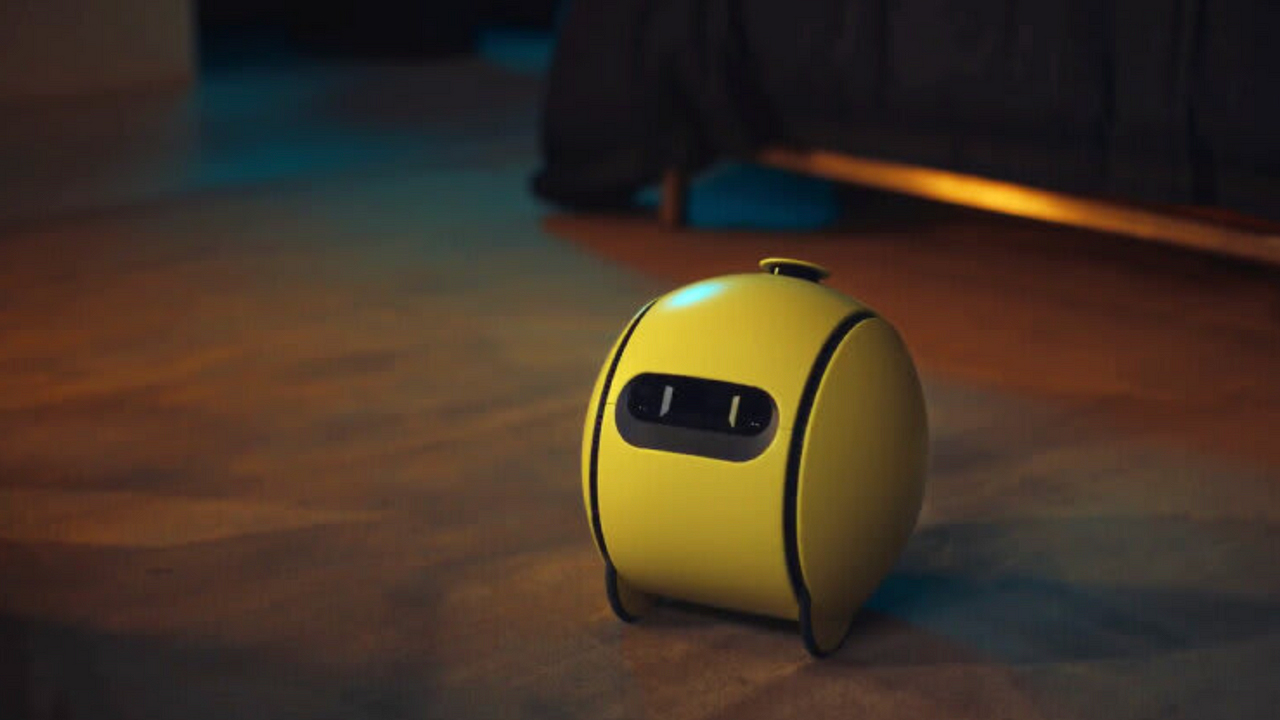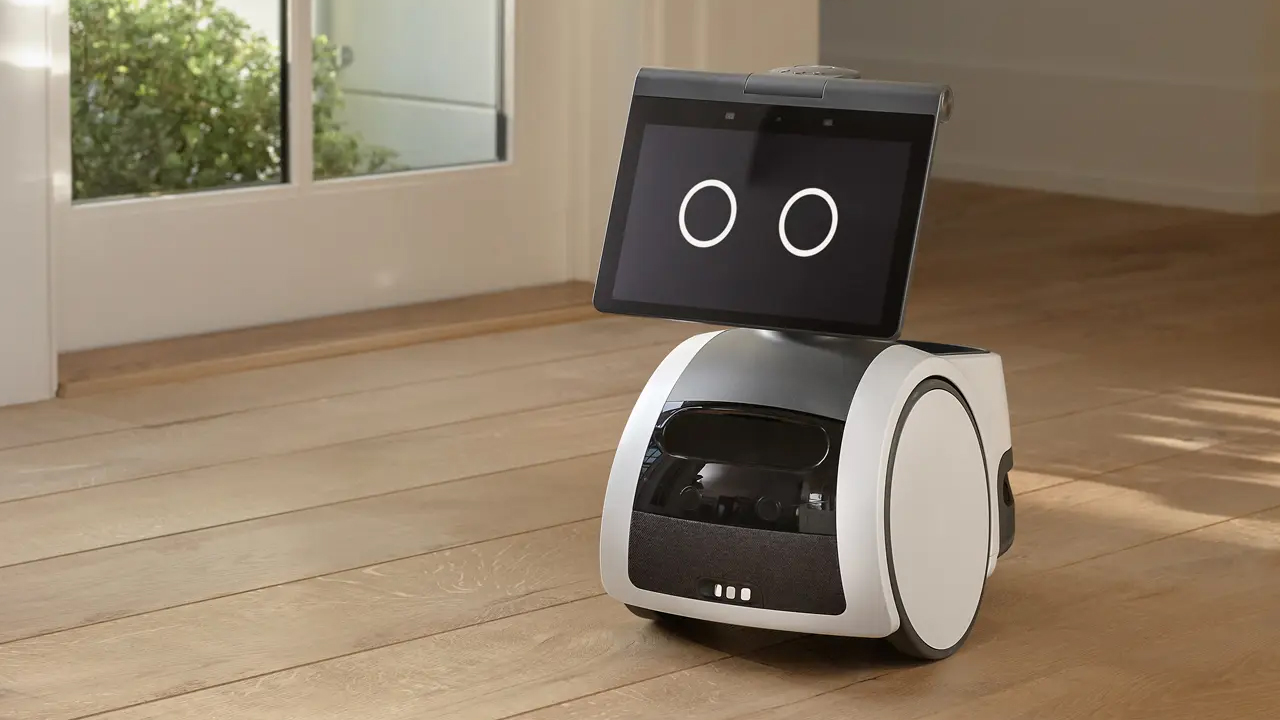Apple is thinking about putting two robots in your home — but even with AI, only one would make any sense today
Can Apple succeed in robotics where others have only dreamed?

Personal robotics are eternally on the brink of being ‘the next big thing’ — and eternally out of reach of reality, too.
Ever since the ‘Space Race’ era of 1950s technological optimism, sci-fi fans (if not every imaginative child that’s ever lived) have dreamed of having their own personal robot around the house, whether that’s to go on some big adventure with, or more prosaically to help with the chores.
C-3PO, Wall-E, the whole Transformers gang — everyone’s got a favorite.
It’s an ideal intrinsically linked to the rise of artificial intelligence, the current tech buzz topic that looks genuinely set to transform the way we live, with pop-culture connotations both positive and negative when robotics and AI combine. On the one hand, R2-D2 pretty much single-handedly saves the universe in the Star Wars films (seriously, go back and watch how many times his little AI brain saves the day). On the other hand, Terminators, Skynet, nuclear apocalypse, and the end of the world. Gulp.
Decades of progress in robotics are finally arriving at a point of critical advancement in AI, to the point where they could revolutionize each other. We’ve seen the wobbly steps of Honda’s Asimo progress to the frankly frightening mobility of Boston Dynamic’s parkouring Atlas, while AI has gone from beating champion players of chess and Go to being able to parse, evaluate, and communicate vast swathes of information via chatbots like ChatGPT.
And now, according to the latest rumors, Apple wants in. With an Apple Car-shaped hole to fill in its research and development budget and ground to make up between its AI ambitions and the early moves of its competitors, the company is said to be exploring robots for your home. Not one, but two robots in fact.
But should it? Here’s why only one of them makes any sense today.
iMore offers spot-on advice and guidance from our team of experts, with decades of Apple device experience to lean on. Learn more with iMore!
What’s in the (skunk)works?
Bloomberg’s Mark Gurman, a regular Apple insider with sources close to the company’s ongoing plans, has reported that Apple is in the early stages of development of two robotics products:
Apple hopes such a device, in its ultimate form, could eventually have the dexterity to do household chores like cleaning dishes.
“Engineers at Apple have been exploring a mobile robot that can follow users around their homes, said the people, who asked not to be identified because the skunk-works project is private. The iPhone maker also has developed an advanced table-top home device that uses robotics to move a display around, they said.”
Those that pay close attention to the Apple rumor mill may not be surprised to hear about that second table-top device, which has been previously reported on. But a “mobile robot” is all new — and considerably more ambitious. There’s even a suggestion that Apple hopes such a device, in its ultimate form, could eventually have the dexterity to do household chores like cleaning dishes.
Interestingly, it’s said that both projects have their roots in research carried out for the Apple Car project: A mobile robot presumably needs to understand that collisions are bad just as much as an autonomous car would. The car may be dead, but its legacy may still live on.
The competition (or lack thereof)
But you have to look at the project with a healthy dose of skepticism. Yes, robot vacuum cleaners are now relatively commonplace, and iRobot’s Roomba and Dyson’s robotic cleaners have had success. But that’s a single-use product area designed to hardly ever interact with its user. Is there a market for a more personal form of home robotics? And if not, what would it take to make one?

Apple wouldn’t be the first company to try to answer those questions. Back at CES 2020, Samsung revealed the wonderfully named “Ballie”, a roving smart ball bot that could stream video, play music, and handle some smart home functionality. Ballie 1.0 was vaporware — a show-stealing tech demo and nothing more. But fast-forward to CES 2024 and Ballie was back, bigger, less anthropomorphized, and with an AI infusion. Version 2.0 is probably closer to what Apple envisions for its bot than anything else currently on the market, and is, somewhat incredibly, pitched to go on sale this year.

I’ll believe that when I see it — I’ve seen robots launch and fade into obscurity before. Remember Amazon’s Alexa-fuelled Astro? It too was initially pitched (way back in 2021) as an on-wheels helper around the house. But years after its initial reveal, it remains “available only by invitation” on the Amazon website, priced at $1,599.99. Somewhat tellingly, Amazon quietly repositioned a version of the camera-equipped Astro as ‘Astro for Business’ towards the tail end of 2023, priced at $2,349.99. Now described as a “mobile security robot”, it’s interesting to see Astro openly for sale at a higher price when sold as a human deterrent, compared to its other form as a cheaper human companion (one that you can’t buy even if you want to).
There’s a smell of desperation here, and a need to prove that there’s some industry-shifting work going on in regards to AI, even in the far-flung future.
If a robotics push seems a bit of a wild move by Apple, that’d be fair. According to Gurman’s sources, Apple is “under growing pressure to find new sources of revenue” following the shuttering of the costly Apple Car project. Vision Pro, another risky product launch in a somewhat unproven market, is expected to take several years before it’ll become a substantial money-spinner for Apple. There’s a smell of desperation here, and a need to prove that there’s some industry-shifting work going on in regards to AI, even in the far-flung future, that long-term investors need. The hunt for Apple’s next $200 billion iPhone-sized hit continues.
Now keep in mind that these are being reported as ‘moonshot’ ideas — characterized by early prototyping and research that doesn’t necessarily precede an actual product launch. Should Apple continue to pursue a wandering robot for your home it may be many years before it ever comes to fruition. And in that time frame, there’s the potential for all manner of advancements to be made to make a robot butler a plausible product — the rapid progress of artificial intelligence being a key factor here.
But going back to the customer at the heart of this idea, it’s hard to picture a sense of scale to such an idea enough to warrant a huge focus from the company. Apple tends to come late to a party and deliver a best-in-class product — but as Samsung and Amazon’s nascent efforts show, that party hasn’t even sent out invitations yet. That’s a very different prospect to the Apple Car which, despite monumental engineering challenges that eventually shuttered the project, was at least in an area with mass scale and the potential to innovate (and iterate) within. Personal robotics is a long, long way from that.
But a robotics-fuelled smart home hub? That might just make a bit more sense — with or without a robotic element, in fact.
Smart home HomePod hub simplicity — with a sprinkling of robotics
Apple has dabbled in the smart home market for years now — its HomeKit system has carved a niche among the die-hard home automation community, and with some success.
But barring a partnership with the open Matter smart home standard (a standard that, if successful, would eventually make individual smart home standards like HomeKit basically obsolete anyway), Apple hasn’t done much to improve its smart home positioning. Though an iPad, iPhone or Apple TV can effectively control smart home devices, it’s an afterthought in the grand scheme of those devices’ functionality.

Apple has a potential advantage with an ‘aware’ smart hub that Amazon’s Echo Show 10 does not, however — trust.
I’ve long thought Apple has needed a true smart home hub, and this robotics-injected device could maybe be it. I’m still not convinced by the rumors of the roboticized elements of the device in development — it’s said to resemble an iPad on a motorized arm that can, for instance, mirror the nods and head movements of a person on the other end of a FaceTime call. And that’s presumably alongside doing all manner of other tasks, such as playing video, music, and accepting voice commands to control other connected devices. In fact, it sounds a hell of a lot like Amazon’s Echo Show 10. What did I say about Apple being late to the party, but coming along as the best dressed?
Apple has a potential advantage with an ‘aware’ smart hub that Amazon’s Echo Show 10 does not, however — trust. It doubles down on user privacy and security at every opportunity. And so there’s the feeling that a robotic smart display from Apple that’s intelligent enough to follow a user’s gaze and be equipped with cameras and microphones and all other necessary but-potentially-intrusive components, would be more palatable to the privacy-conscious out there.
And with that, it’d give Apple a fixed place in the busiest hubs in your home — the kitchen and the living room. It’s got the iPhone in your pocket when you’re on the go, it’s got the Mac at your desk when you sit down to work. But it’s never really nailed a pinned-down spot in the places where you unwind and interact with your family. And there’s a wealth of opportunities for Apple to monetize those spaces.
AI-powered robots are likely to come on leaps and bounds in the next few years. But maybe all it takes for Apple to get an early win in the space is some baby steps — and a robotic smart home hub, a mega HomePod if you like, could be a step in the right direction.
More from iMore
- The case for a HomePod with a screen
- Apple AI: What you need to know about artificial intelligence for iPhone and beyond
- Tim Cook promises AI breakthroughs in Apple shareholder meeting

Gerald Lynch is the Editor-in-Chief of iMore, keeping careful watch over the site's editorial output and commercial campaigns, ensuring iMore delivers the in-depth, accurate and timely Apple content its readership deservedly expects. You'll never see him without his iPad Pro, and he loves gaming sessions with his buddies via Apple Arcade on his iPhone 15 Pro, but don't expect him to play with you at home unless your Apple TV is hooked up to a 4K HDR screen and a 7.1 surround system.
Living in London in the UK, Gerald was previously Editor of Gizmodo UK, and Executive Editor of TechRadar, and has covered international trade shows including Apple's WWDC, MWC, CES and IFA. If it has an acronym and an app, he's probably been there, on the front lines reporting on the latest tech innovations. Gerald is also a contributing tech pundit for BBC Radio and has written for various other publications, including T3 magazine, GamesRadar, Space.com, Real Homes, MacFormat, music bible DIY, Tech Digest, TopTenReviews, Mirror.co.uk, Brandish, Kotaku, Shiny Shiny and Lifehacker. Gerald is also the author of 'Get Technology: Upgrade Your Future', published by Aurum Press, and also holds a Guinness world record on Tetris. For real.
